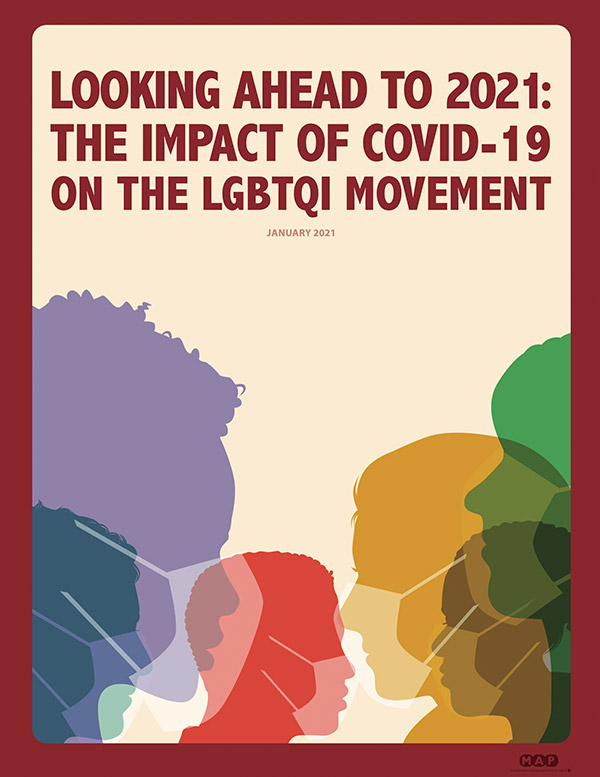Looking Ahead to 2021: The Impact of COVID-19 on the LGBTQI Movement (PDF)Download Related Report: Understanding the Impact of COVID-19 on the LGBTQI Movement (September 2020)Visit Issue Page: COVID-19Visit
The unrelenting COVID-19 pandemic has drastically changed the way individuals, families, and communities live, learn, work, and connect. For organizations serving LGBTQI people in the United States, it is clear that their financial outlooks and stability for 2021 will continue to be impacted by the pandemic.
To understand the ways LGBTQI and allied social justice organizations have adapted to the pandemic and what their plans are in the new year, MAP conducted several surveys. Using survey data from November 2020,
Looking Ahead to 2021: The Impact of COVID-19 on the LGBTQI Movement provides the broadest view of the pandemic’s impact, allowing organizations to reflect on changes over the past eight months.
While LGBTQI and allied organizations are demonstrating the ability to adapt to the financial challenges that COVID-19 has meant for fundraising, corporate and foundation giving, and beyond, it is vital that funders and individual donors think strategically and act thoughtfully to ensure the strength and continuity of the movement. As organizations continue to address the needs of their communities in 2021, these funding streams will be vital lifelines for their work to achieve LGBTQ equality.
Recommended citation: Movement Advancement Project. January 2021.
Looking Ahead to 2021: The Impact of COVID-19 on the LGBTQI Movement.
www.lgbtmap.org/2021-covid-impact-report. Accessed [date of access].


